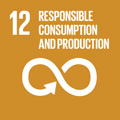- Docente: Leonardo Nanni Costa
- Credits: 6
- SSD: AGR/19
- Language: Italian
- Teaching Mode: Traditional lectures
- Campus: Bologna
- Corso: First cycle degree programme (L) in Animal Production (cod. 8882)
Learning outcomes
At the end of the course, the student has basic knowledge on the production techniques of meat and milk. In particular, the student is able to: - understand the main steps of the production and identify the factors that may affect the process in terms of quantity and quality - assess and recognize the rearing techniques related to the profitability and sustainability of livestock production - access and use information on production traits and genetic values.
Course contents
Cattle. Veal and beef production: beef cattle breeds, breeding schemes, carcass grading, meat quality. Milk production: dairy cattle breeds, breeding schemes, dairy herd management and feeding. Sheep and goat: breeds, breeding, feeding, milk and meat production.
Readings/Bibliography
The book suggested is written in Italian but, on a request, a book on English could be used.
The book suggested is: Manuale di nutrizione dei ruminanti da latte. Ronchi, Savoini, Trabalza-Marinucci. EDISES Università, Napoli, 2019.
The following chapters are suggested:
Capitolo 5: Piano alimentari per animali in produzione
bovini: da 5.1 a 5.2
ovini: da 5.8 a 5.10
caprini: 5.11
Capitolo 6: Piani alimentari per animali in accrescimento e da riproduzione
Capitolo 9: alimentazione e impatto ambientale
Teaching methods
The course is divided in two units; the first includes 40 hours of lectures supported by pictures and short movies. It is finalized to show the main arguments related to the ruminant production. The second unit is devoted to seminar and lab activities as well as to visit farms (if it will be possible taking into account the pandemia).
Assessment methods
The examination is oral and includes four questions. The first question concerns sheep or goats production, and it is mainly focused on Italian breeds; the second concerns the main topics of cattle feeding; the third concerns the breeding techniques applied by the Italian breeder associations and the fourth concerns the sustainability of ruminant production. Usually the examination lasts 30 min
Teaching tools
Pc with video projector
Office hours
See the website of Leonardo Nanni Costa
SDGs

This teaching activity contributes to the achievement of the Sustainable Development Goals of the UN 2030 Agenda.
